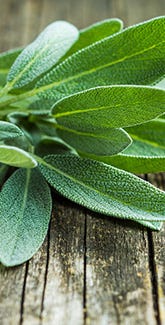Pronunciation Aside, Tomatoes Are Simple!


Tomato Growing Guide
Tomatoes are frequently classed as determinate or indeterminate. Determinate varieties stop growing once they have reached a certain height and do not require staking or caging. They are shorter than indeterminate varieties, which will continue to grow throughout the season (much like other vines) and will require staking.
Sowing: Tomatoes should be started indoors in early spring about 6-8 weeks before the last anticipated frost date. Bottom heat helps the plants to germinate. Transplant when all danger of frost is over and after the plants have been hardened off for a week. (Hardening off refers to a process of gradually introducing your seedlings to the elements and temperatures of the outdoors before permanently transplanting them.) Remove all but the topmost leaves from the seedlings and bury most of the plant, leaving only 4-5 inches above the soil. Plant determinate plants 12-24 inches apart in rows 24-30 inches apart. Plant indeterminate plants 24-36 inches apart in rows 36 inches apart.
Growing: Tomatoes thrive best with consistent moisture and soil that is rich in phosphorus and potassium, but not nitrogen. Water your tomato plants generously for the first couple of days after transplanting, and then on a regular basis to ensure the soil stays moist (about 2 inches of water per week on average). Adding mulch about 4-6 weeks after transplanting will help with maintaining good moisture levels.
Picking: Tomatoes need to be harvested as soon as they are ripe. Frequent harvesting will increase the yield. Tomato plants will grow fruit until the nighttime temperatures dip into the low 60s. If some tomatoes fall from your plants before they are ripe, you can place them in a paper bag (stem side up) and store them in a cool, dark place to encourage ripening. Contrary to common practice, tomatoes should not be placed on a sunny windowsill to ripen as the light and warmth may cause them to rot quickly rather than ripen slowly. In addition, tomatoes should never be stored in the refrigerator.
Eating: Salsa, soup, sauce, salads, sandwiches, juice, paste, puree. A tomato's uses are seemingly endless, as are its health benefits. So regardless of how you choose to enjoy them, your body will reap so many rewards thanks to their countless vitamins and minerals and cancer-fighting antioxidants. Tomatoes are natural detoxifiers so are fantastic for the liver and kidneys. They're also great for skin, eye, and stomach health and help regulate blood pressure and cholesterol.
Knowing: Of all the vegetables grown in America, none is more universally beloved than the tomato, and yet, for many decades, this delightful fruit was shunned by Americans who considered it poisonous. This fear even extended to lettuce and the other salad greens, which could only be eaten fresh.
Container Friendly? Most determinate tomato plants will do well in containers and can be planted singly in anything a half barrel or larger in size (about 26 inches in diameter). Indeterminate tomato plants can also be planted in much larger containers, but because they grow much taller and require staking or other support, it's best to plant them directly in a garden or much larger bed.



